When you go out and buy a suit today, no matter if it’s offline or online, chances are you encounter the terms Glued, Fused, Half Canvas or Full Canvas. But what exactly do these terms mean, and why are some jacket construction techniques better than others?
Many of salesmen use these terms loosely and therefore we want to help you understand what you buy so you get the most value for your money when you buy a suit. Don’t expect the salesman to know what they’re talking about, you should know what you get so you don’t get cheated.
Why Do you Need a Suit Interlining or Canvas?
Basically, fabric is two-dimensional. It’s woven, it’s flat. A suit is three-dimensional so the interlining helps to keep the garment in its three-dimensional shape so it’s flattering to your body.
Now for the interlining, you basically have three options. It starts with glued or fused, half canvas, and full canvas. With full canvas being the best and fused being the cheapest and not so good option. Let’s start with the cheapest option and work our way up.
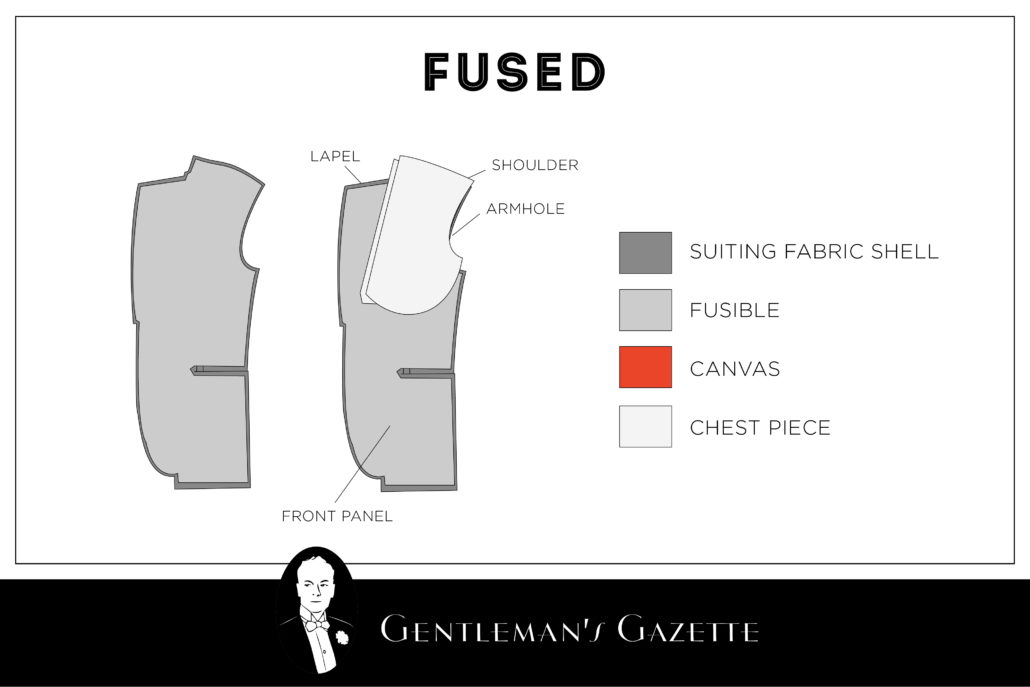
Fused / Glued Interlinings
Fused or glued interlinings are the number one thing in the sewing industry today simply because they’re inexpensive and you can produce it on a mass scale very easily and cost effectively.
So what are the advantages apart from it being cheap? Well, it does the job, it gives the garment a three-dimensional shape.
The problems, however, are manifold. First of all, because it is glued, there’s not much flexibility in the garment and you can feel it because it feels less comfortable and it does not stretch when you move. Usually, you do get a chest piece that helps to form that three-dimensional shape that looks very masculine, however, in a garment of that category, you usually get something more inexpensive such as a cheap cotton or low-quality wool blend.
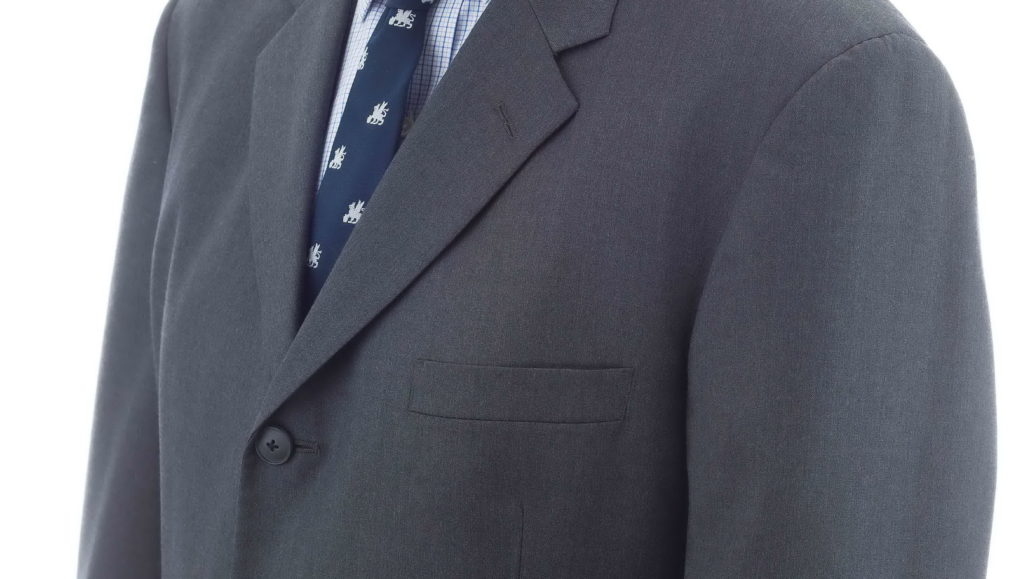
My big pet peeve with fused or glued garments is that they are more insulating and less breathable which makes me overheat more quickly and sweat. Generally, whenever I touch a fused garment, it feels somewhat limp and depending on what chest piece it has, it could be stiffer or softer.
Overall, it’s just a very unexciting feel. With a fused interlining, you also don’t end up with a nice lapel roll. Usually, they’re quite flat which looks unexciting. Usually, it’s a hallmark of a cheap glued suit. Because of the interlining, sometimes it always kind of stands in an awkward manner and there’s really nothing you can do about it, it just looks off to a trained eye.
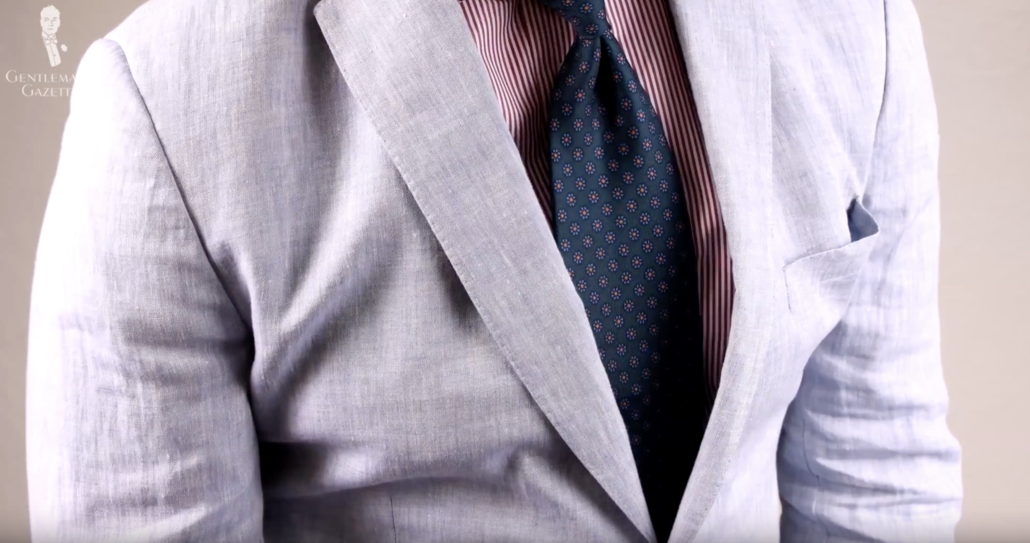
Moreover, these fused jackets are not made to last because eventually, they will come loose and at that point, it’ll form ugly blisters on your lapel and on the outside, that’s when you have to throw the garment away. So, when you buy a fused suit, you’re part of the throwaway economy because the resources that are used have to be thrown away and it’s also bad for your wallet because even though the initial investment is low, you have to buy it over and over again.
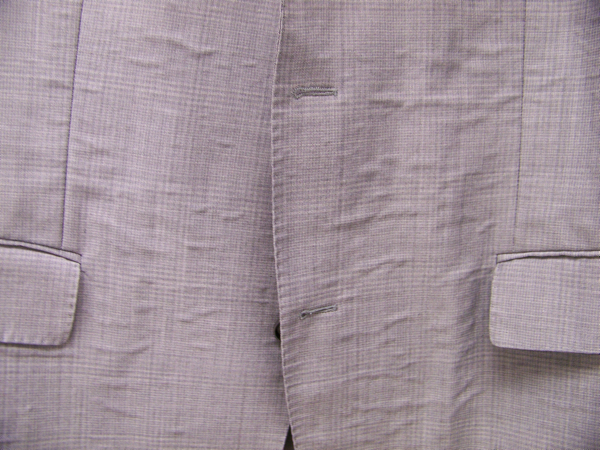
If we look at a graph, it starts out with being quite good but today, you wear it, it just deteriorates over time and then at one point in time when you get the blisters, you can throw it away and it’s worthless.
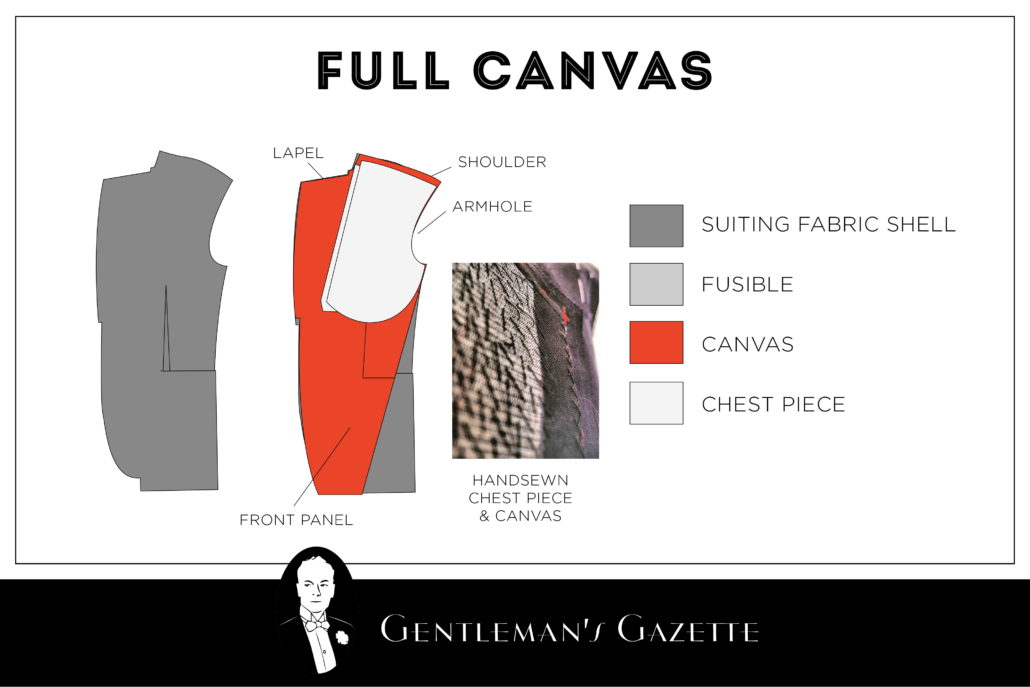
Full Canvas Construction
First of all, the only disadvantage of this method is that it’s quite time-consuming and therefore expensive, however, it has many advantages.
First of all, the interlining is sewn to the fabric and as such, it is flexible. So when you move, it moves with you, it’s comfortable, there are no pressure points, over time, the garment actually gets better. On top of that, you can really decide what kind of stiffness you go for. For example, the jacket I’m wearing in the video is extremely soft, it feels more like a sweater and it has some structure when I stand still but if you see the wrinkles here, they just stay like that.
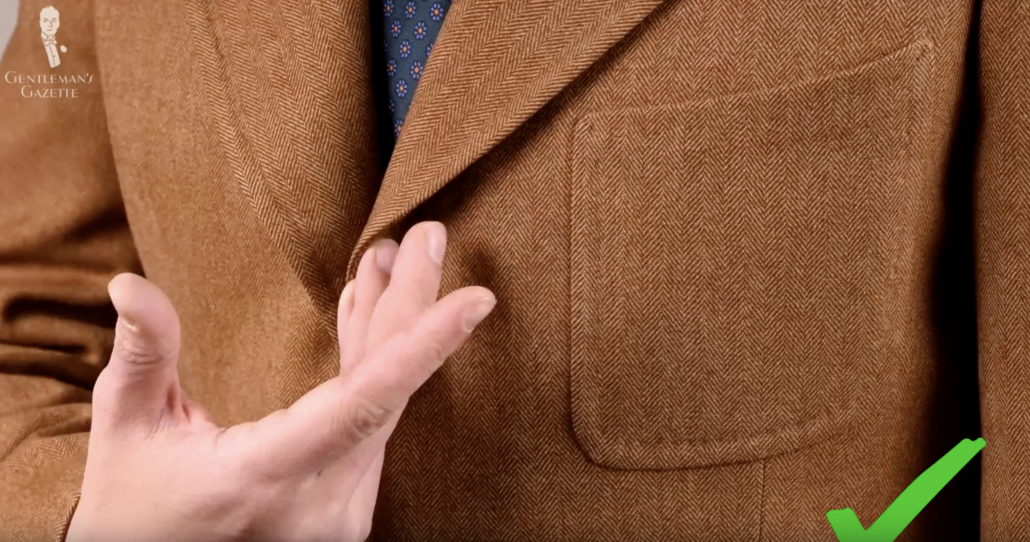
On a traditional suit, tailors used horse hair because it was very stiff and springy and it could keep the shape even though you wrinkle it. For example, when I touch this, it springs right back in shape as if nothing ever happened. So this is actually a vintage rowing blazer made in England in the 60’s.
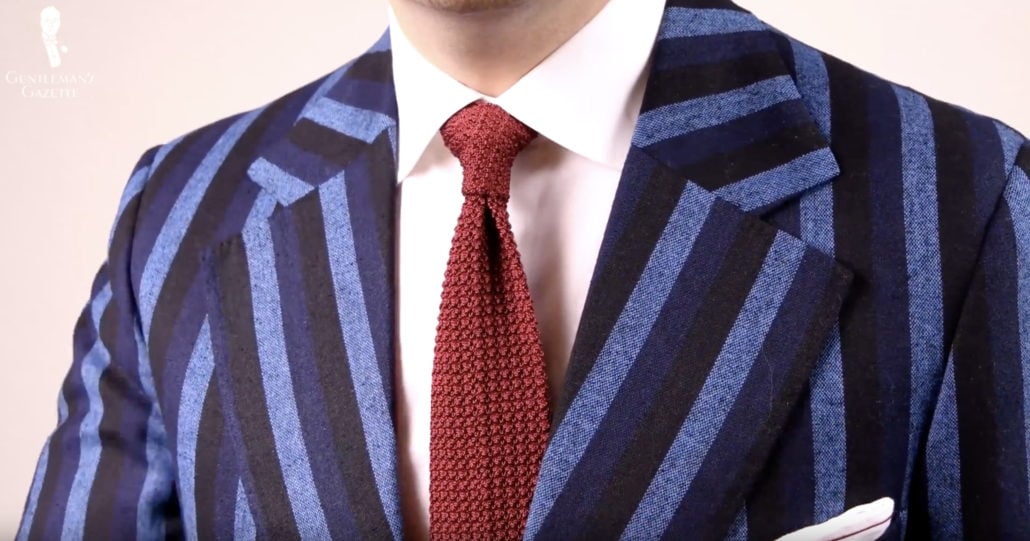
It’s much stiffer and feels like it but it has this crisp look that you sometimes know from military garments or evening wears such as tuxedos or tailcoats. However, if I really want to look my best, I go for something crisp and springy because it simply has the most beautiful lines.
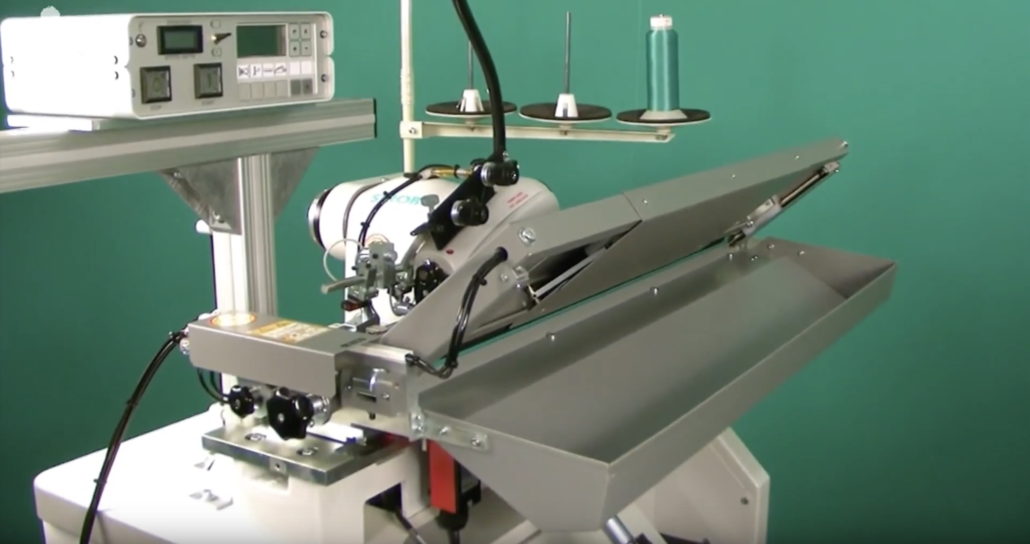
Also if you go with a stiffer interlining, it smoothens over any kind of bumps or imperfections in your body so it would be much easier to fit. It takes about an hour per lapel to sew the canvas to the fabric so it stays in shape and looks good. Fortunately, it doesn’t wear out and if you look at it on a graph, the handmade jacket gets better as you wear it and you will never have issues with blisters and you wear the fabric out before there’s any issue with the canvass. To achieve the lapel roll, you have to take the interlining, the canvas, and the fabric, angle it and then sew it, that way it stays in shape and will always go back to that angle. The lapel roll is a quality hallmark.

To cut costs, the German company Strobel came up with a machine that enabled to sew the lapels while they’re angled but first, they had to be operated by hand but it saved a lot of time. Today they have the KA-ED machine which sews it fully automatically and you can do a lapel in one minute. The great thing is, it comes with a left side and a right side because the lapels or angled in a different direction. A good operator can work on two machines at the same time which means you actually get four lapels in one minute. Throughout an 8-hour day, someone could make anywhere from 600-1000 suit lapels whereas, by hand, you can end up just making about 6-10. Obviously, that’s a lot more efficient and if you produce quality suits on a mass scale, it really makes sense. However, it also has its price, the machine of that caliber, costs $100,000.
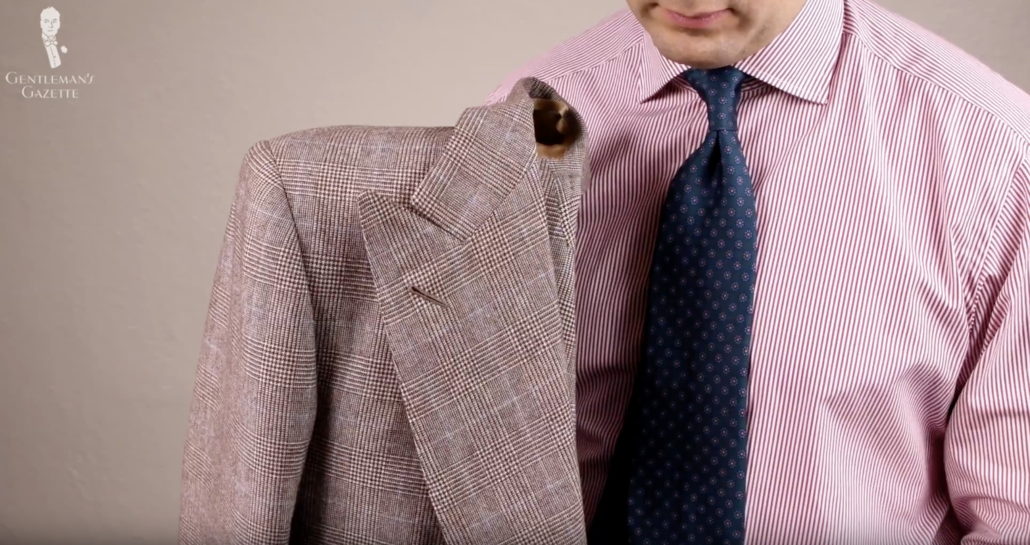
Now, some people say the quality is not as good as if it is made by hand. Actually, we tested it, the jacket I’m wearing here right now has one lapel padded by hand and the other one padded by a machine and there’s really no discernible difference. They both roll, they’re both quality and the machine-made product can be as good as the hand-made product in that instance.
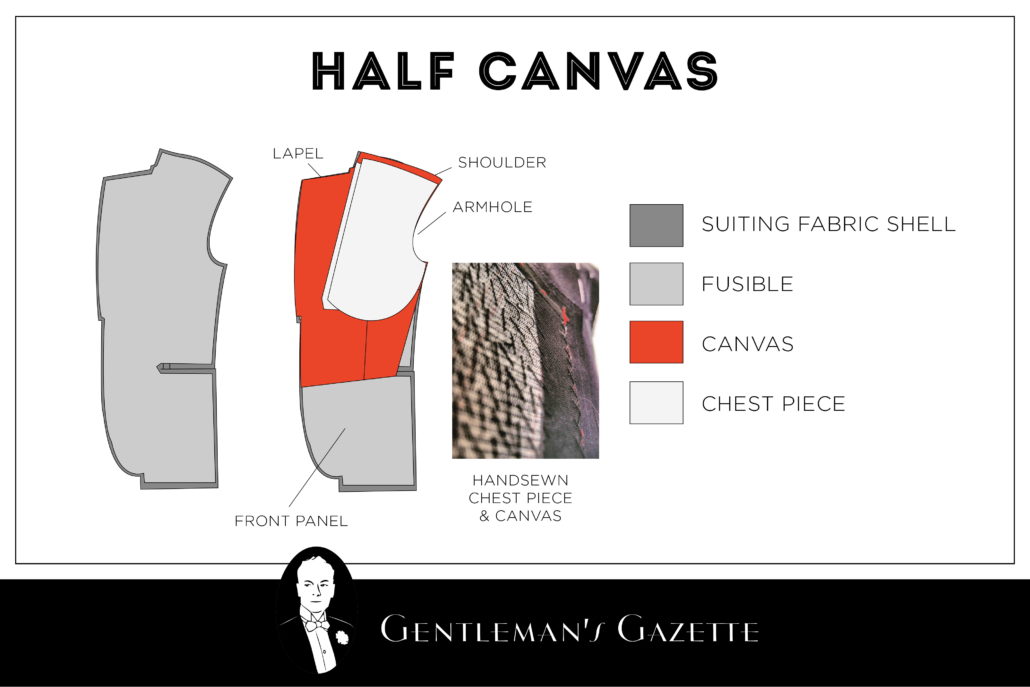
Half Canvas Construction
It basically takes the best of both worlds in a sense that it takes a good chest piece that is sewn and lasts for a while with the cheap part of the glue to keep the cost down. It’s called half canvas but in fact, it’s more like a 2/3 canvas with ⅓ of a glued interlining.
The only reason to ever go with half-canvas versus full canvas is to save on cost. So if you don’t want to compromise in terms of quality, you should always opt for the full canvas. However, if you can’t afford full canvas, a half canvas garment is much superior to a glued interlining because it’s more breathable, more comfortable, you don’t overheat, and it lasts longer. Personally, I’d always rather save for a full canvas construction but that’s just my personal opinion and each to his own.
CONCLUSION
At the end of the day, it’s important to keep in mind that everything has its purpose but if you can afford it, opt for the full canvas. If not, go for the half canvas and personally, I’d suggest to always stay clear of the glued canvas unless there’s really no other way for you than to go with a glued interlining.
To learn more about suits and jacket please check out our other guides such as Bespoke vs. MTM vs. RTW or $100 vs. $1,000 Suit and $500 vs. $5,000 Suit.
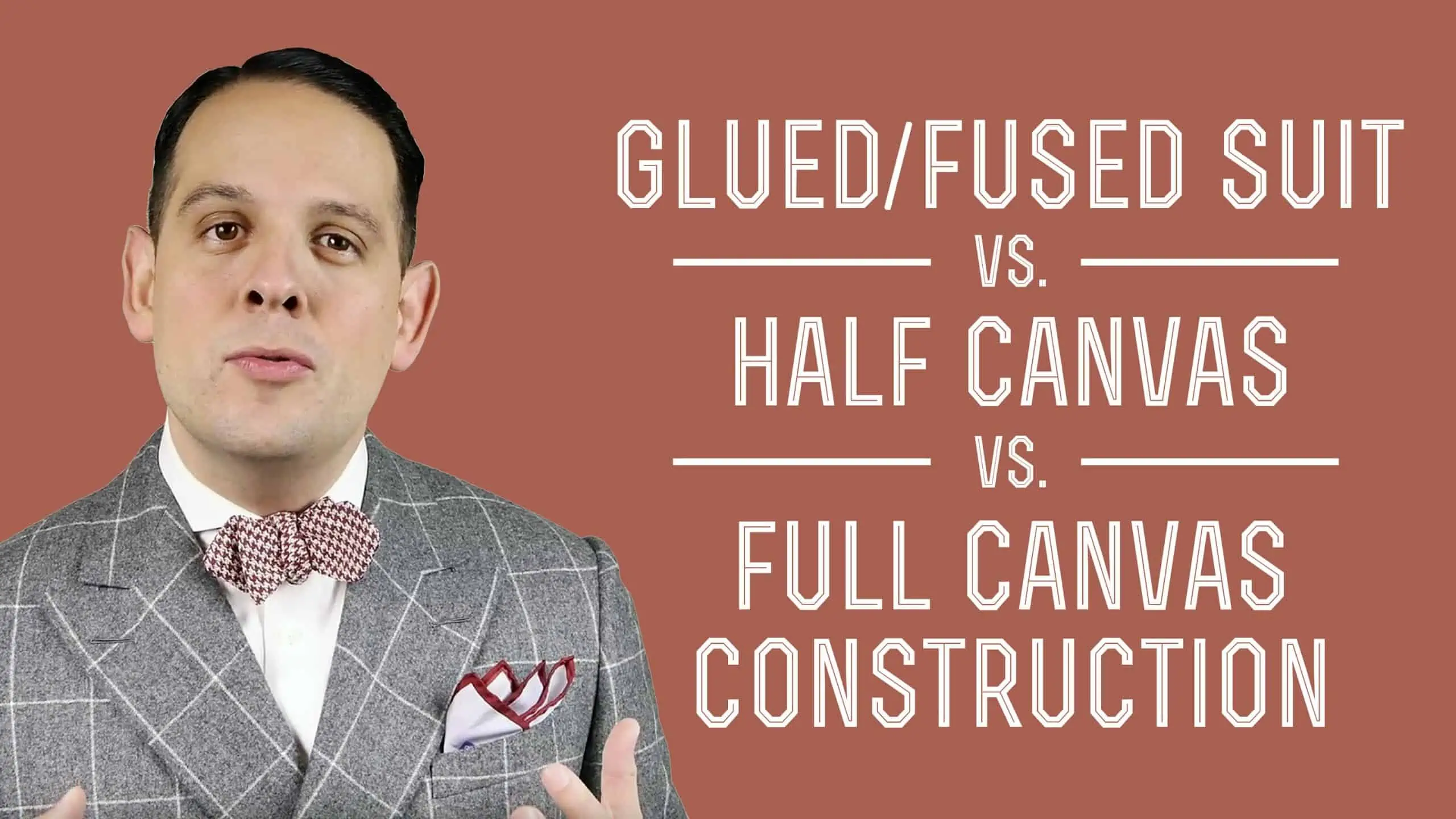
So many things to learn.
Thank you for being a terrific teacher.
Thank you for the kind words, georgy. We are happy to help!
Thank you, this is very helpful and something to consider for my next purchase. Aside from relying on the knowledge and honesty of the salesman, is the best tool for spotting construction the lapel roll and feel of the chest piece?
Very interesting and useful information. Appreciate your effort in putting these together and sharing them with the world.
best Regards
Berry
Thanks for the support!
Dear Sven, great article about suit construction! The details about the full canvas construction makes me appreciate my collection of both half canvas and full canvas jackets more!
One thing I notice is that, in your half canvas section, you mention that the fusing is “a 2/3 canvas with 1/3 of glued interlining”. However when I compare all three construction infographics, I notice that you illustrated that both the half canvas and fused jackets have a fusible glued onto their suiting fabric shells on the whole front part of the jacket, but on the full canvas, you illustrate that the canvas is fully stitched onto the fabric shell.
https://www.gentlemansgazette.com/wp-content/uploads/2017/02/Fused-1030×687.jpg
https://www.gentlemansgazette.com/wp-content/uploads/2017/02/Half-Canvas-1030×687.jpg
https://www.gentlemansgazette.com/wp-content/uploads/2017/02/Full-Canvas-1030×687.jpg
My question is, how can a half canvas jacket made as you have illustrated still be breathable and comfortable compared to the fully fused jacket if both already have a fusible glued to the front where there is a lot of contact with the chest and abdomen? It almost seems to me that the half canvas construction actually adds more layers to the front and makes it even less breathable.